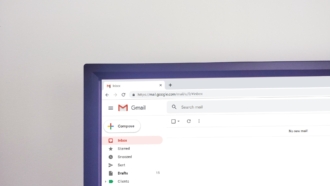Customer onboarding is one of the most important touchpoints in a SaaS business. When onboarding is successful, organizations educate their customers on how to effectively use their product so they can quickly see value and achieve specific goals. Without this foundation, customers won’t know the ins and outs of the product, and they may end up churning without fully using the application.
Here’s how you can create an effective SaaS onboarding checklist to set your customers up for success.
Create an onboarding schedule
SaaS onboarding typically takes around two weeks to complete. It can be shorter or longer, depending on the complexity of your product. Figure out the different elements your onboarding will include — such as welcome messages, product walk-throughs, and guided tutorials — and plot them out on a timeline.
Here’s a two-week SaaS onboarding checklist template you can use. Focus the first week on completing forms and collecting information, and spend the second week on training and walk-throughs.
Regardless of your schedule, always be proactive. “Don’t make people wait for your next email, message, or call. Set things in motion as soon as possible so that you can begin serving your customer. People don’t like feeling as though they’ve been forgotten or that they’re not sure what to do during the onboarding process,” advises Devin Schumacher, Founder at SERP, a digital marketing agency.
Identify the key features you want to highlight
Your SaaS product likely has multiple features that interest customers. However, to avoid overloading your customers with information, focus on two or three key features that most effectively help them find value.
Keep the “time to value” metric in mind when developing your SaaS onboarding checklist so you can reduce churn and improve retention. By highlighting key features that provide value, you can set up your customers to see immediate results with your app.
Provide a quick and achievable task
While video user guides, walk-throughs, and step-by-step blog posts offer support to your customers, people often learn best by doing.
Include a simple and achievable task that your customers can try during onboarding. You can use call-outs and flags to guide them through it, or — depending on the complexity of your software and the size of the account — you could walk them through the task on a call.
Alexandre Cipriani, cofounder of SalesTim, a third-party app for Microsoft Teams, notes that they use the interface with a client during a meeting and show them how to complete a simple business use case, such as building a template or setting up governance policies.
Quick wins like this show customers immediate value and provide them with a milestone they can celebrate.
Offer plenty of opportunities for support
Build touchpoints in your SaaS onboarding checklist where you reach out to the customer to offer support. This can be in the form of emails, in-app messages, or phone calls, depending on your software’s capabilities.
Remember, the onboarding process is the time for customers to learn how to use your product, so they’ll likely have questions and feedback. Make it easy for them to connect with you so they don’t become disengaged and leave.
Building an information exchange is crucial to customer onboarding, notes Anthony Martin, CEO and founder of Choice Mutual, a final expense life insurance company. He says, “The onboarding experience pivots around avid communication.”
Provide additional ways for customers to find value
Some customer segments will require more support and education than you can offer during the onboarding process. You might have an advanced user who’s trying to accomplish complex tasks — or they could be the opposite, a novice user who requires additional hand holding.
Whatever the case, take time during your onboarding process to point out the additional materials that are available to customers, such as a knowledge base, detailed user guides, community forums, and more. This helps customers feel supported once the onboarding process is complete.
Cipriani notes that conducting a customer success check after the two-week onboarding process is a good opportunity to answer burning questions and acquire valuable feedback. It can take the form of a call or online survey.
Give customers a way out if needed
While your SaaS onboarding checklist may feel integral to you — and to many customers — to some it will be a burden. Don’t force your customers to complete a SaaS onboarding.
You may have an experienced user who’s already familiar with your product, or they may find your product intuitive and may not require any training. Either way, offer them a chance to exit at certain points so that they can continue to use the product the way they want. However, be sure to check in periodically to offer support and point them toward DIY resources.
“If you value your customer’s happiness, then you should value your customer onboarding strategy,” notes Martin. Making the entire onboarding checklist a positive experience will maximize your chances of developing loyal customers who are also brand advocates.






































































Send Comment: